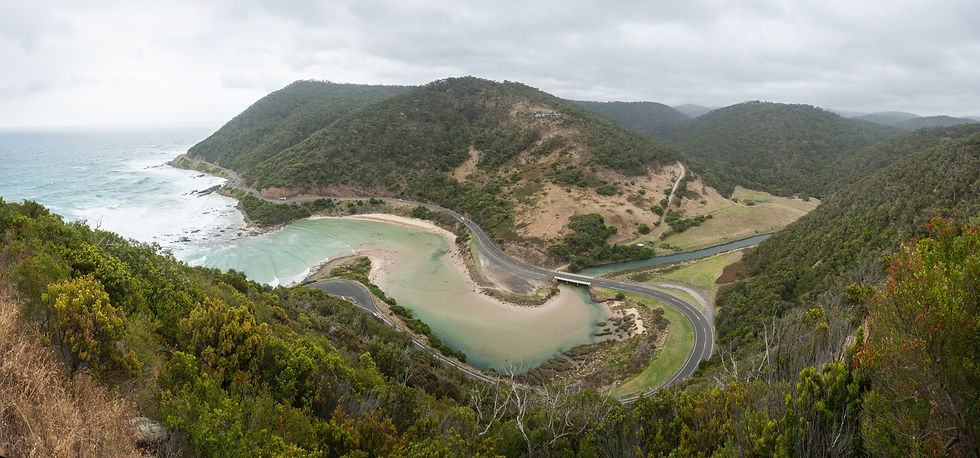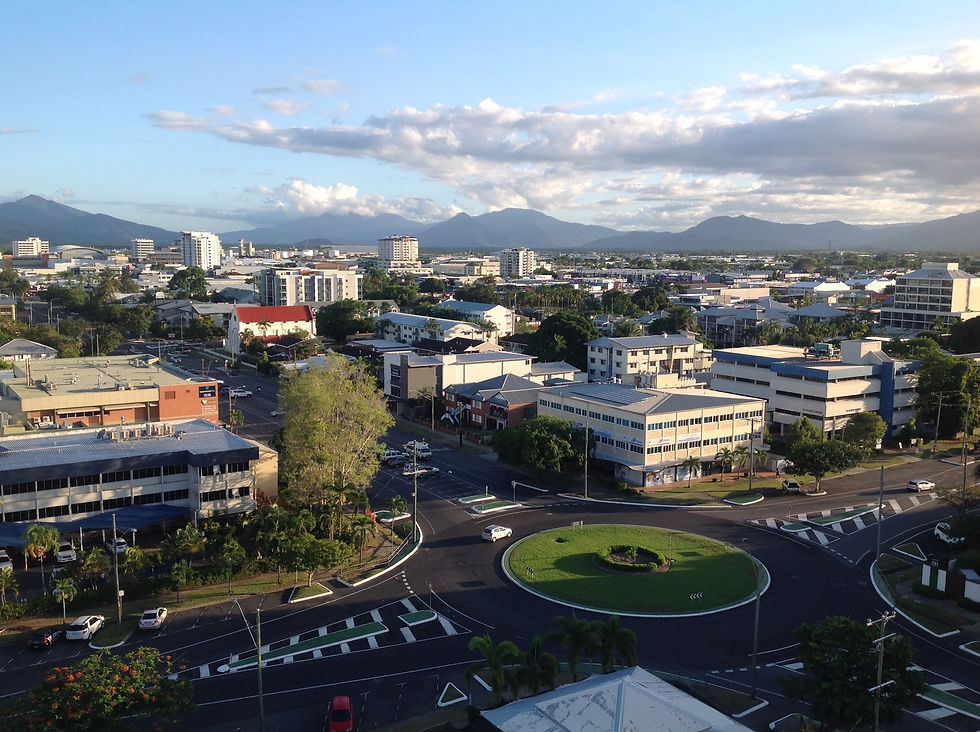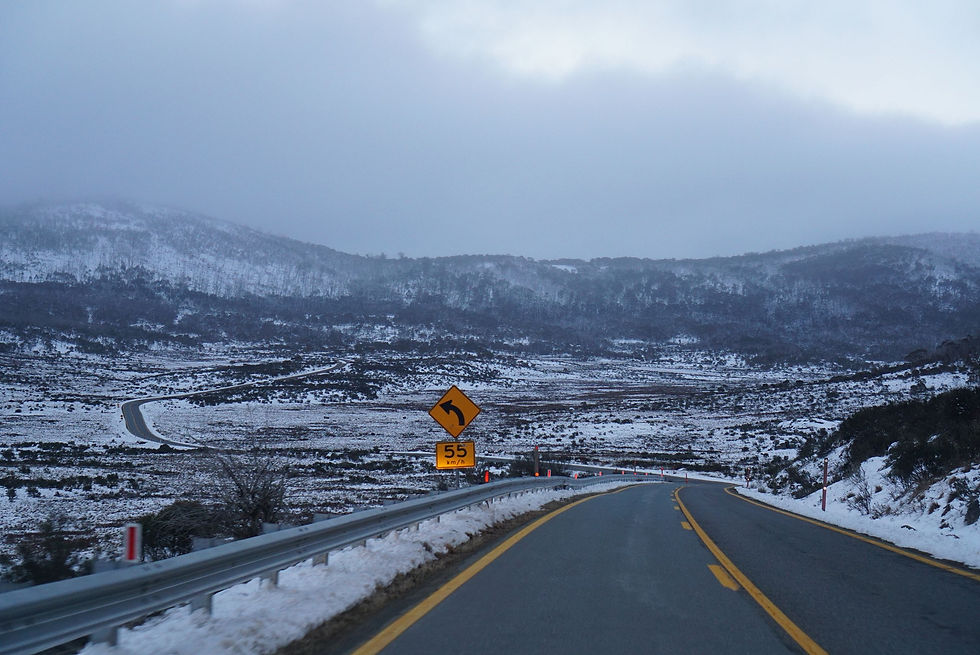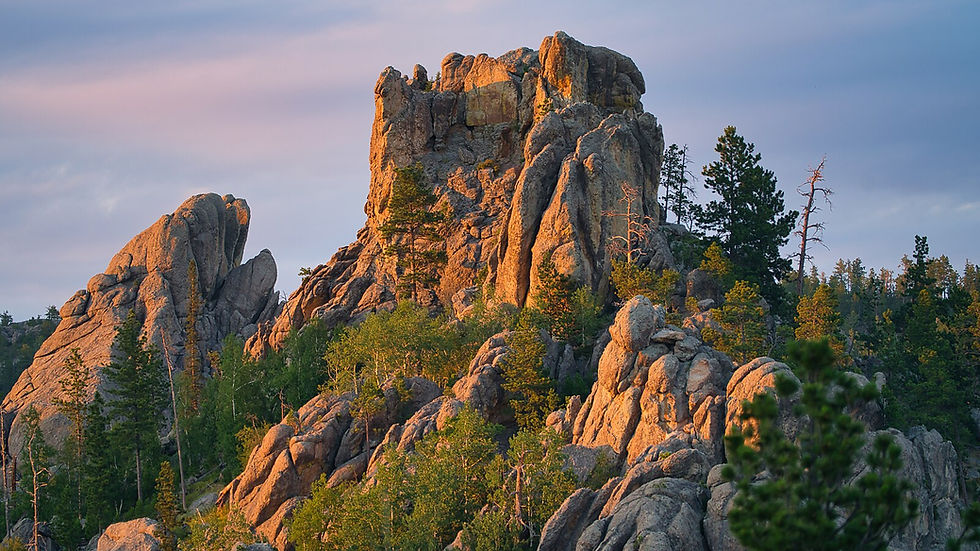10 BEST places to visit in Australia in August
- Our Hidden Earth

- Aug 6
- 11 min read
Updated: Aug 10
August is one of the best times to explore Australia’s stunning variety of destinations.
From snow-covered mountains in the south to tropical reef adventures in the north, the weather is crisp, skies are clear, and tourist crowds are low.
It’s the perfect season for road trips, hiking, wildlife encounters, and scenic views. Whether you're escaping the city or chasing natural beauty, this is the ideal month to see Australia at its seasonal best.
Below are the 10 best places to visit in Australia in August, each offering something unique, and perfect for a winter getaway you won’t forget.

1) Cairns, Queensland
Cairns is warm, tropical, and perfect for outdoor adventures in August. It’s the best time of year to visit the Great Barrier Reef, with calm seas and clear water ideal for snorkelling and diving.
The Daintree Rainforest is nearby too, offering peaceful walks, cool shade, and lots of native animals. Cairns itself is lively, with markets, lagoon swimming, and plenty of food spots. August also brings migrating whales along the coast and a calm, dry climate with temperatures around 26°C.
You can take a train to the village of Kuranda or ride the Skyrail over the rainforest. Tour boats run daily to nearby reef locations, suitable for all experience levels. Evenings are pleasant, with colourful sunsets and live music along the Esplanade.
It’s the perfect place to relax or fill your days with nature-based activities. Cairns in August is warm, fun, and full of once-in-a-lifetime moments.
FAQs/Things to know before visiting Cairns, Queensland
1) What is the weather like in Cairns during August?
August is dry and sunny with warm daytime temperatures around 25–27°C. There’s little rain and low humidity, making it one of the best months to visit.
2) Is it a good time to snorkel the Great Barrier Reef?
Yes, water visibility is excellent in August, and the sea conditions are calm. It’s a perfect month for reef tours, even for beginners.
3) Can I see whales in Cairns in August?
Yes, humpback whales pass along the coast during their migration. You can often spot them on dedicated boat tours or even from the shore.

2) Blue Mountains, New South Wales
The Blue Mountains are a peaceful retreat just 90 minutes from Sydney, filled with cool mountain air and stunning cliff views. August is ideal for walking through eucalyptus forests and exploring waterfalls, canyons and caves without summer crowds.
The weather is crisp and fresh, often with morning mist that makes the scenery look even more magical. The famous Three Sisters rock formation and Echo Point are must-sees, but quieter trails like the Grand Canyon Walk are just as rewarding.
You can warm up in cosy cafés, browse mountain bookstores or stay in rustic lodges with fireplaces. Wildlife is easier to spot in cooler months, with lyrebirds and kangaroos often seen near walking tracks. Scenic World’s skyway and cable car run all year and offer stunning views across the Jamison Valley.
The vibe is calm and quiet, perfect for a weekend reset. The Blue Mountains in August are relaxing, natural, and full of fresh air.
FAQs/Things to know before visiting Blue Mountains, New South Wales
1) Is August a good time to visit the Blue Mountains?
Yes, the weather is cool but comfortable for hiking, and you’ll avoid the peak holiday crowds. Clear skies make for beautiful mountain views.
2) What should I wear in the Blue Mountains in winter?
Bring layers, as mornings and evenings can be cold. A jacket, sturdy walking shoes and a raincoat are good to have just in case.
3) Are the walking trails open in August?
Yes, most major trails are open all year, though it’s wise to check local conditions after rain. The paths are quieter and more peaceful in winter.

3) Kangaroo Island, South Australia
Kangaroo Island is a peaceful place filled with native animals, rugged coastlines, and untouched beaches, and it’s even better in August. Winter rain makes the landscape green and alive, and many animals are easier to see.
You’ll spot kangaroos, wallabies, sea lions and echidnas in the wild, often up close. Flinders Chase National Park is home to the Remarkable Rocks and Admirals Arch, both striking against winter skies. This is also the time for whale watching from southern coastal lookouts.
The local food scene is fantastic, with farm-fresh produce, honey, seafood, and wine. Fewer tourists in August mean you can explore at your own pace. Roads are quiet, and the island feels like your own private wildlife sanctuary.
You’ll need a car to get around, but that adds to the adventure. Kangaroo Island in August is raw, green and full of life.
FAQs/Things to know before visiting Kangaroo Island, South Australia
1) Is Kangaroo Island good to visit in winter?
Yes, August is a great time to see wildlife and enjoy the island without summer heat or crowds. The cooler weather is great for hiking too.
2) Do I need a car to explore Kangaroo Island?
Yes, the island is large and spread out, with limited public transport. A car makes it easy to reach beaches, national parks and local producers.
3) Can I still do outdoor activities in August?
Definitely, most attractions are open year-round. Just pack a warm jacket and waterproof shoes for comfort during walks or coastal stops.

4) Uluru, Northern Territory
Uluru is one of Australia’s most famous landmarks, and August offers ideal conditions to explore this ancient, sacred place. The weather is dry and mild, with warm days around 22–25°C and cool, starry nights.
This makes walking around the base of Uluru or hiking nearby Kata Tjuta much more enjoyable. Cultural tours run daily and teach visitors about Anangu stories, traditions and the spiritual meaning of the land.
The skies are incredibly clear in August, perfect for stargazing or viewing the Field of Light installation after sunset. It’s also outside of fly season, making the desert experience more pleasant. Tours range from guided walks and camel rides to helicopter flights for unforgettable views.
The red desert landscape is peaceful and surprisingly full of life in winter. Visiting Uluru in August gives you the space, silence and connection that this sacred site deserves. It’s a journey every Aussie should make at least once.
FAQs/Things to know before visiting Uluru, Northern Territory
1) Is Uluru cold in August?
Mornings and nights are chilly, often near 5°C, but days are comfortably warm. Dress in layers so you’re prepared for both.
2) Do I need a guide to walk around Uluru?
You can walk the base trail on your own, but guided tours provide cultural stories and deeper meaning. It’s highly recommended for first-time visitors.
3) How many days should I stay near Uluru?
Two to three nights is ideal to explore Uluru, Kata Tjuta, and enjoy sunrise, sunset and stargazing experiences without rushing.

5) Freycinet National Park, Tasmania
Freycinet National Park is a coastal gem on Tasmania’s east coast, home to Wineglass Bay and dramatic pink granite mountains. August brings cool, clear days perfect for walking, photography, and wildlife watching without the summer crowds.
The famous Wineglass Bay Lookout is a short but rewarding hike with one of the best views in Australia. You can also kayak in Coles Bay, explore secret beaches, and watch for dolphins and seabirds along the shore. The crisp winter air adds a sharpness to the scenery that’s perfect for outdoor lovers and photographers.
There are cosy cabins and eco-lodges nearby where you can relax after a day of exploring. Native animals like wallabies, wombats and echidnas are often spotted right near the trails.
Winter food menus feature local seafood, cheeses and cool-climate wines that pair perfectly with the setting. Freycinet in August is wild, quiet and incredibly scenic. It’s perfect for a peaceful nature escape.
FAQs/Things to know before visiting Freycinet National Park, Tasmania
1) Is Tasmania too cold to visit in August?
Not at all, Freycinet’s east coast is milder than Tasmania’s inland areas. Expect highs around 12–15°C with mostly dry, sunny weather.
2) Are the walking tracks open during winter?
Yes, most trails are open and well-maintained in August. Wear layers and bring a rain jacket just in case of changing conditions.
3) Can I see wildlife in Freycinet in August?
Yes, winter is a great time to see wombats, wallabies and seabirds. The park is quiet, so animals are more likely to be out and about.

6) Margaret River, Western Australia
Margaret River is the perfect place to relax, eat well, and enjoy nature in August. This beautiful region is famous for its wineries, surf beaches, forests and gourmet produce. August is still part of winter here, with cool days and cosy evenings, perfect for wine tasting and long lunches by the fire.
The vineyards are green and peaceful, and you’ll find truffles, cheese, and fresh bread at local markets and farm shops. Whale watching is at its peak, with humpbacks often spotted from the coast between Cape Naturaliste and Augusta. The weather is ideal for forest walks among towering karri trees in the Boranup Forest.
You can explore limestone caves, walk along wild beaches, and visit art galleries dotted around the countryside. The town itself is welcoming, with boutique shops and casual cafés to explore.
There’s a slow, friendly pace to life here in winter. Margaret River in August is rich, peaceful and full of flavour.
FAQs/Things to know before visiting Margaret River, Western Australia
1) Is August a good time for wine tasting in Margaret River?
Yes, cellar doors are open year-round and winter means fewer crowds and more personal service. Many offer indoor tastings by the fire.
2) Can I see whales near Margaret River in August?
Definitely, humpback whales migrate along the coastline this time of year. You can often spot them from lookouts or join a guided tour.
3) What should I pack for a trip to Margaret River in winter?
Bring warm layers, a rain jacket, and comfortable shoes for walking. The weather is cool but perfect for cosy indoor and outdoor activities.

7) Snowy Mountains, New South Wales
August is peak snow season in the Snowy Mountains, making it a fantastic time to visit for winter sports and alpine scenery. Resorts like Thredbo, Perisher and Charlotte Pass are buzzing with skiers and snowboarders of all ages and skill levels.
The snow is deep and fresh, and there's plenty to do off the slopes too. You can go tobogganing, snowshoeing or enjoy a scenic chairlift ride for views over snowy peaks. Kosciuszko National Park is stunning in winter, with frozen streams and snow-covered forests to explore.
The mountain villages are cosy and welcoming, offering log fires, hearty meals and après-ski drinks. If you're not into skiing, you’ll still love the fresh air and beauty of the alpine setting.
There are also spas, day tours, and wildlife spotting opportunities. Families, couples and solo travellers all find something to enjoy. The Snowy Mountains in August are cold, exciting and full of winter magic.
FAQs/Things to know before visiting Snowy Mountains, New South Wales
1) Do I need to pre-book ski passes in August?
Yes, August is the busiest month for snow sports, and passes often sell out. Book lift tickets, rentals and lessons online in advance.
2) What else is there to do besides skiing?
You can go hiking, snowshoeing, tubing or simply enjoy the alpine atmosphere. There are also indoor activities like day spas and cosy dining spots.
3) How cold is it in the Snowy Mountains in August?
It’s often below freezing overnight, with daytime highs around 0–5°C. Dress in layers and make sure to bring gloves, a beanie and waterproof gear.

8) Whitsundays, Queensland
The Whitsundays are a group of 74 tropical islands in Queensland, known for soft white sand and sparkling blue water. August is one of the best times to visit, with dry weather, clear skies, and perfect conditions for sailing, snorkelling and exploring.
Temperatures are warm and pleasant, usually around 24–26°C, with no humidity and no stingers. Whitehaven Beach looks picture-perfect this time of year, with its bright silica sand and turquoise sea. August is also part of the whale migration season, so you might spot humpbacks during a cruise or flight over the reef.
The Great Barrier Reef is nearby and easy to reach by boat or tour, offering excellent snorkelling in calm waters. Resorts on Hamilton Island or Daydream Island are popular, but Airlie Beach on the mainland is great for budget travellers.
Whether you're after luxury or adventure, there’s something here for everyone. The Whitsundays in August are sunny, calm, and truly unforgettable.
FAQs/Things to know before visiting Whitsundays, Queensland
1) Is it warm enough to swim in the Whitsundays in August?
Yes, the water stays around 23°C, and the weather is sunny and mild. You won’t need a stinger suit in winter, which makes swimming even easier.
2) Can I visit the reef from the Whitsundays?
Absolutely, there are daily boat tours to reef pontoons and snorkelling spots. You can also take scenic flights over Heart Reef and Whitehaven Beach.
3) What’s the best island to stay on in the Whitsundays?
Hamilton Island is the most developed with restaurants and tours, while Daydream Island is smaller and more relaxed. Both are great bases in August.

9) Darwin & Kakadu National Park, Northern Territory
Darwin and Kakadu are warm, dry and full of life in August, the perfect time to explore Australia’s tropical Top End. This is the height of the dry season, with sunny skies, comfortable heat and almost no rain.
Darwin comes alive in August with night markets, open-air festivals, and beautiful sunsets at Mindil Beach. Just a few hours away, Kakadu National Park offers ancient rock art, billabongs filled with birdlife, and waterfalls that still flow well after the wet season.
You can take a river cruise to see crocodiles or walk through some of the oldest landscapes on Earth. August is also a good time for 4WD adventures and exploring remote parts of the park.
The region is known for its Aboriginal culture, and guided tours help visitors understand its deep history. Evenings are warm enough for outdoor dining and sunset views. Darwin and Kakadu in August are cultural, wild and truly unforgettable.
FAQs/Things to know before visiting Darwin & Kakadu National Park, Northern Territory
1) Is it safe to visit Kakadu in August?
Yes, August is part of the dry season, when roads are open and conditions are ideal. It's the best time for walking, wildlife and tours.
2) Can I swim in Kakadu National Park?
Swimming is allowed in certain areas like Gunlom and Maguk, but always follow signs and check for crocodile warnings before entering any water.
3) What’s the weather like in Darwin in August?
Warm and dry, with daytime highs around 30°C and low humidity. It’s one of the most pleasant months to explore the Top End.

10) Great Ocean Road, Victoria
The Great Ocean Road is one of Australia’s most scenic drives, stretching along the southern coast of Victoria. August brings a dramatic, peaceful beauty to this famous route, with fewer cars, big waves and misty ocean views.
The Twelve Apostles and Loch Ard Gorge look especially striking against winter skies, and you’ll often have the lookouts to yourself. Whale watching is a major highlight, southern right whales are commonly seen near Warrnambool and Port Fairy during August.
Inland, you can visit waterfalls and lush rainforest walks in the Otway Ranges, which are especially green after winter rains. Towns like Lorne, Apollo Bay and Port Campbell offer cosy stays with ocean views and roaring fireplaces. The road trip itself is a joy, with scenic lookouts, beach stops and great local food.
The cooler air makes it ideal for hiking and photography without the heat or crowds. The Great Ocean Road in August is moody, beautiful and refreshingly calm.
FAQs/Things to know before visiting Great Ocean Road, Victoria
1) Is the Great Ocean Road safe to drive in winter?
Yes, the roads are sealed and well-maintained. Just drive slowly around curves, and watch for wet surfaces after rain.
2) Are there good places to stay along the way?
Absolutely, towns like Lorne, Apollo Bay, and Port Fairy have hotels, cabins and cosy cottages, many with ocean views or fireplaces.
3) Can I see whales in August along the coast?
Yes, southern right whales migrate close to shore in August. Lookouts around Warrnambool and Portland are perfect for spotting them.

Australia in August offers one of the most rewarding travel experiences of the year. The weather is calm and clear, wildlife is active, and many of the country’s best sights are far less crowded than in peak season.
Whether you're exploring the reef, the desert, the mountains or the coast, this month gives you space to breathe and time to take it all in. From alpine adventure to tropical sunshine, there’s a destination here for every type of traveller.
So pack your layers, charge your camera and choose your next adventure, because these 10 places are the best Australia has to offer in August.
When exploring these hidden gems, always consider hiring a guide or joining a tour group, as some locations may require local expertise for the best experience.
Did you know we have a Hidden Gem Finder on our website? This handy little map shows over 13,000 hidden gems across the entire world with their exact co-ordinates available to view on Google Maps as well as an image/description for each one!












Comments